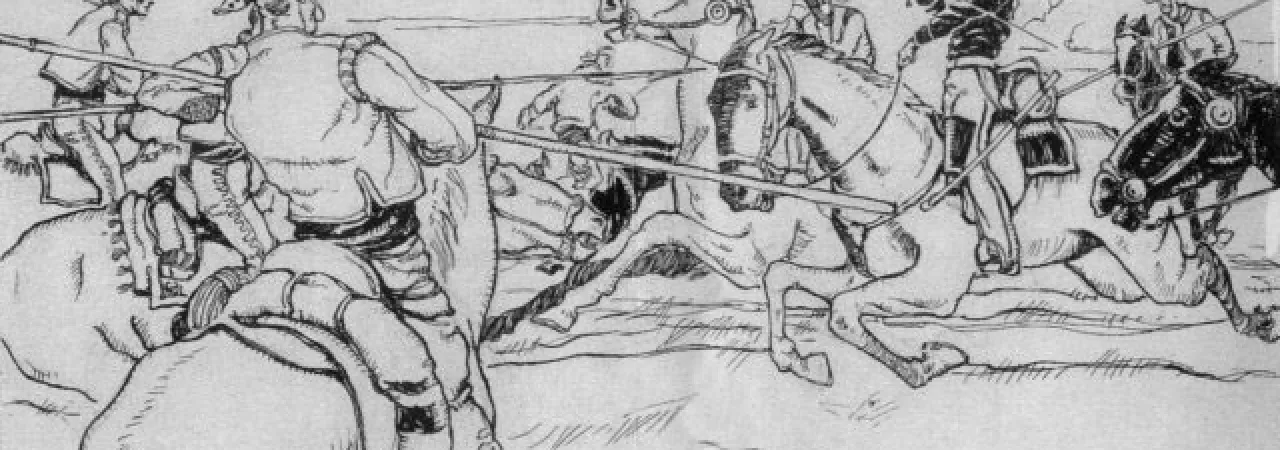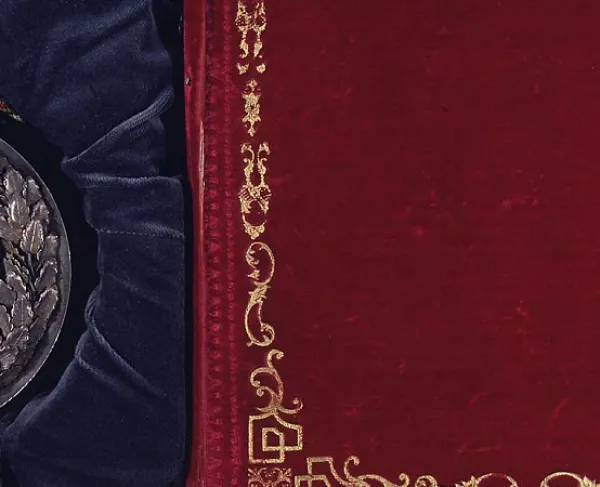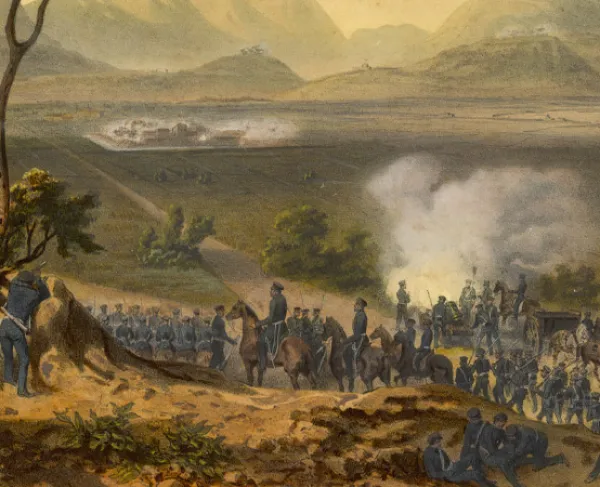
Captain Archibald H. Gillespie of the United States Marine Corps was attacked by lancers, front and rear, at San Pasqual, Arman Manookian, Honolulu Academy of Arts, 1920
San Pasqual
Escondido, CA | Dec 6 - 7, 1846
Setting out from Fort Leavenworth, Kansas, in June 1846, General Stephen W. Kearny’s 1,500- man “Army of the West” (as he called his command) established American control over New Mexico before heading to southern California. Although exhausted after a 2,000-mile march and enduring miserable conditions, especially heavy rains that wetted down the American gunpowder, Kearny ordered an attack on a local force known as “Californios.” The American attack was disorganized and ill-prepared. After repulsing two charges by American dragoons, the Californios, armed with long lances, countercharged. The Americans lost one of their two cannon to capture before using their remaining howitzer to scatter the enemy. Despite suffering heavier losses, the Americans held the field. The Army of the West continued on to San Diego the next day, despite considerable enemy harassment.
That night, the Americans encamped on Mule Hill, an easily defensible position for the Americans about five miles south of present-day Escondido, California. For the next several days the Californios blocked the American march until the timely arrival of 200 U.S. Marines and sailors. The Californios withdrew and Kearny’s battered force reached San Diego without further incident. To this day, both sides claim victory at San Pasqual. According to one American historian, San Pasqual “had been a thoroughly bad battle from the American point of view. It had been claimed in Kearny’s defense that because Pico abandoned the field the Americans were thereby victorious, but it is a ridiculous assertion.”
Related Battles
153
70
39
16




